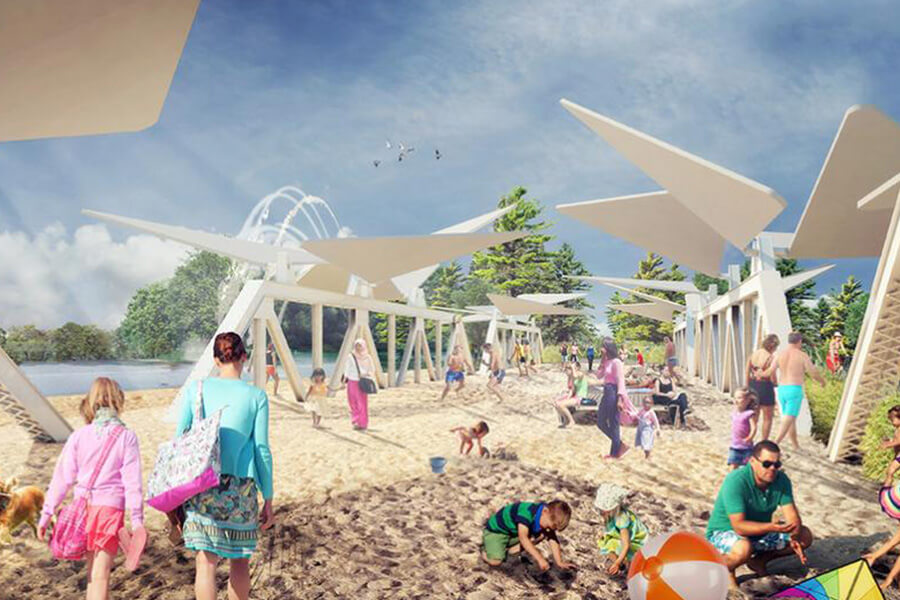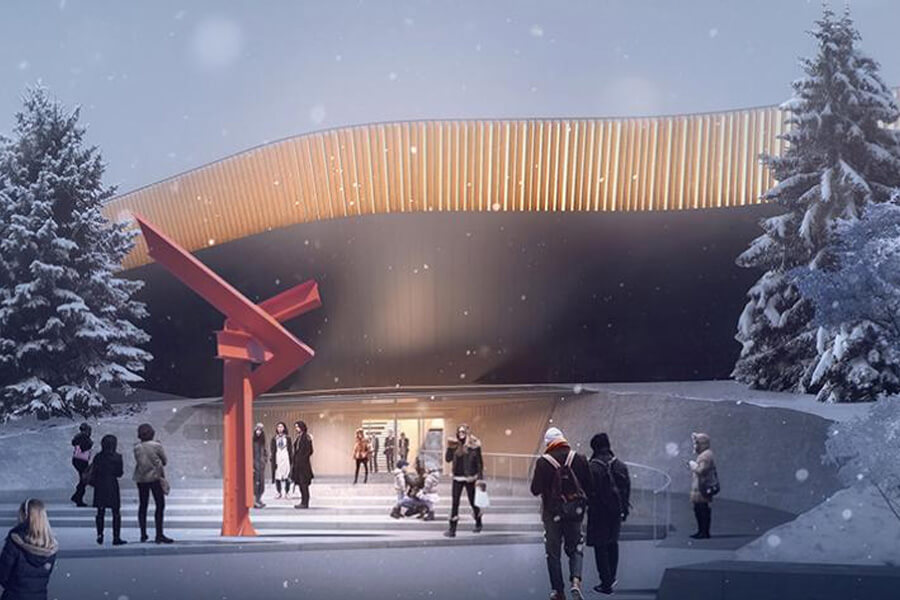
Hyper-Edge
St. Patrick's Island Design Competition
Client
St. Patrick’s Island Competition
Location
Calgary, Alberta
2015
Shortlisted Finalist
Design Team
Janet Rosenberg & Studio (Landscape Architect)
Applied Ecological Services / AES (Ecological Restoration Consultant)
exp. (Civil and Structural Engineer)
Nitsch Engineering (Civil Engineer)
Matrix Solutions (Hydrology Specialist)
Photography Credit: Renderings by JRS and The Flat Side of Design
Our approach to St. Patrick’s island is to address the existing forests and circulation, capitalizing on the site’s strengths, and introducing several new elements which are designed to encourage an increased use of the island by the community.
Our challenge is to occupy the least amount of footprint while reinforcing existing systems and diversifying the experience of the island. Presently, all the existing pathways on the island are internal, preventing an engagement with the surrounding river. Our design includes several interventions designed to reintroduce the experience of water into the island, allowing for a safe experience of the river.
Our understanding of St. Patrick’s Island is in the city’s psyche, from its siting at the confluence of the Bow and Elbow rivers, hosting the favorite activities and aspirations of Calgarians, which places great importance on the shoreline.
We have chosen to expand these experiences with an emphasis on the edges of the island, incorporating an articulated boardwalk on the southern shore through the reintroduction of the sub-channel, including year-round water elements, and the reforestration of the north shore. This combination characterizes the design around the vision of an expanded shoreline that interprets the ecologies of the island. Our chosen palette expresses our vision through materials, new plantings, and manipulations of ground and tree cover to define a series of spaces on an island in the wild yet of the urban world.
Our proposed boardwalk responds to the topography of the edge of the island through gentle rises and falls that mimic the transitions in grade below.
Through its construction, setback and buffering with native understory plantings, the boardwalk will hover above the shoreline as a protective edge. This will define the prospect to and from the East Village and Inglewood communities, and will serve trout fishermen and fans of winter frazil ice alike by allowing safe access to the water’s edge.
We intend to reintroduce the sub-channel, which formerly separated the islands of St. Patrick and St. George, providing a variety of sensory experiences with water in a setting that is perhaps the most picturesque on the island. Spanning the distance from the dike to the gulley, it will offer a series of expressions of the states of water that take advantage of the full range of elevations on the island.
The historic reading of the north edge of the island has been the forest behind the shoreline. Yearly flooding has protected the island from development, and been the agent responsible for replenishing the forest cover.
Our response to these conditions has been guided by two overwhelming recommendations from the masterplan: one comes from the community, which is a request to keep the island in its largely natural state; the second comes from our team’s ecological assessment of the forest dynamic which recommends accelerating the transition to a younger forest in order to avoid a future when there are no mature trees. We propose therefore replanting much of the island’s existing fragmented open spaces, while creating openings in the forest cover in limited locations, based on program, access, and safety.
The definition of the southern shoreline and the re-forestation of the island will act to preserve the river and forest ecologies by consolidating the existing fragmented patchwork and providing continuity to habitats. This will also serve to strengthen the forested riparian spine as a buffer to the vehicular routes along the northern edge of the Bow River. In contrast, we will take advantage of the southern aspect’s calmer waters, southern exposure, favored river activities, and reciprocal views to neighborhood communities, providing a moment of serenity for the many thousands of new residents of East Village.
In the framework of biophilic design – which advocates the beneficial psychological responses of nature on human behavior- these views will exert stress-relieving and curative effects. For the visitor, the experience along the edges will be heightened by the addition of species which benefit from both sides. This property, called the ‘edge effect’, is considered a principle in wildlife biology and ecology.
We believe this characterization introduces “hyper-edge” to the thinking of the island and may serve as a keen label for the design.
Conceptually, the river acts to juxtapose two sides of the city across time, one of timelessness and the other of the transformative process of the modern city in its built form and infrastructure. St Patrick’s Island is a refuge.
If the inextricability of flow is the metaphor for time, Calgary is blessed with St Patrick’s Island as of one rebirth through flooding. The concept of island is a powerful metaphor in everyday speech and study. It connotes isolation and uniqueness. As a response, we have developed a vision that addresses community needs, promotes a sustainable, ecological approach, and contributes to the interchange between civilization and nature.












